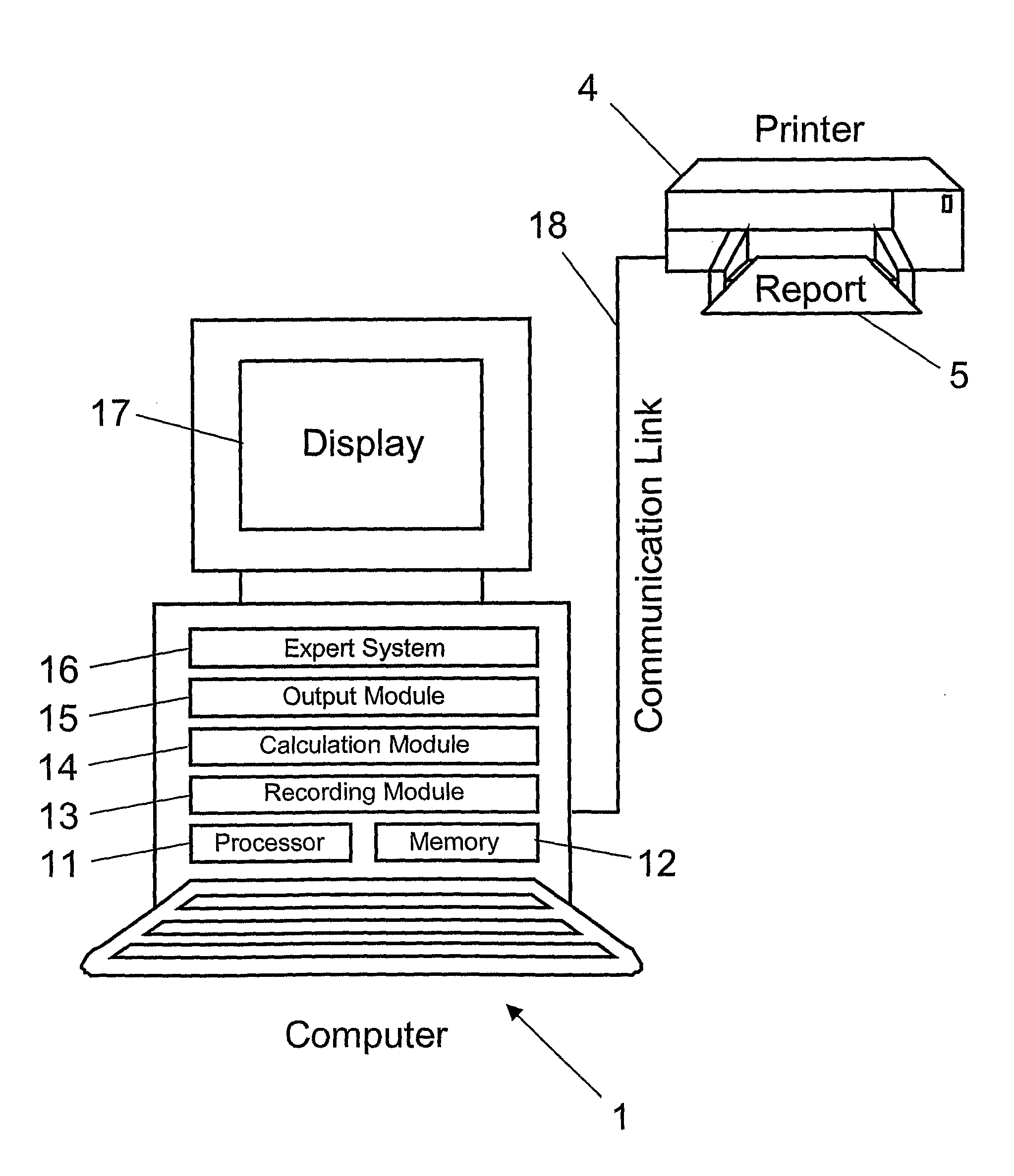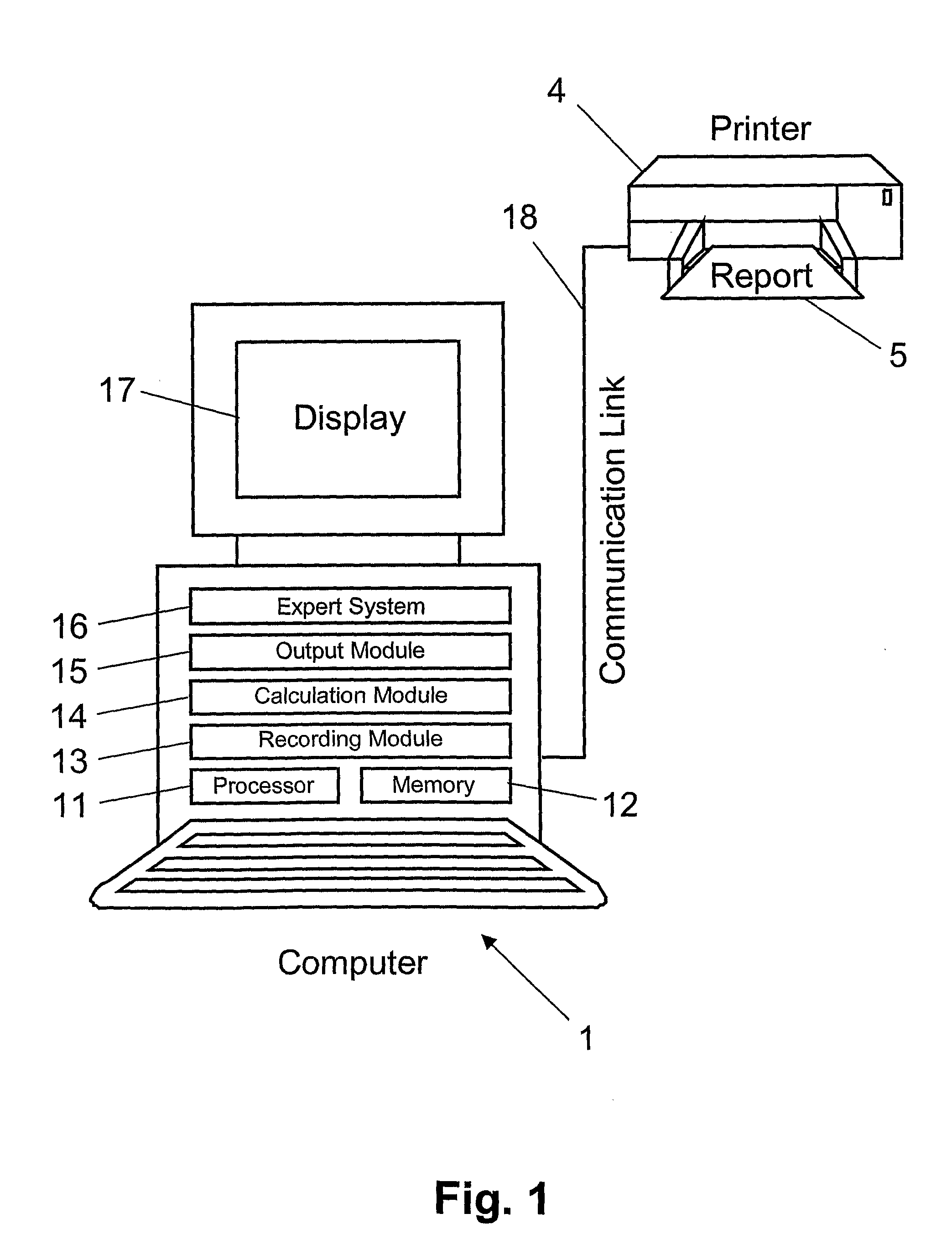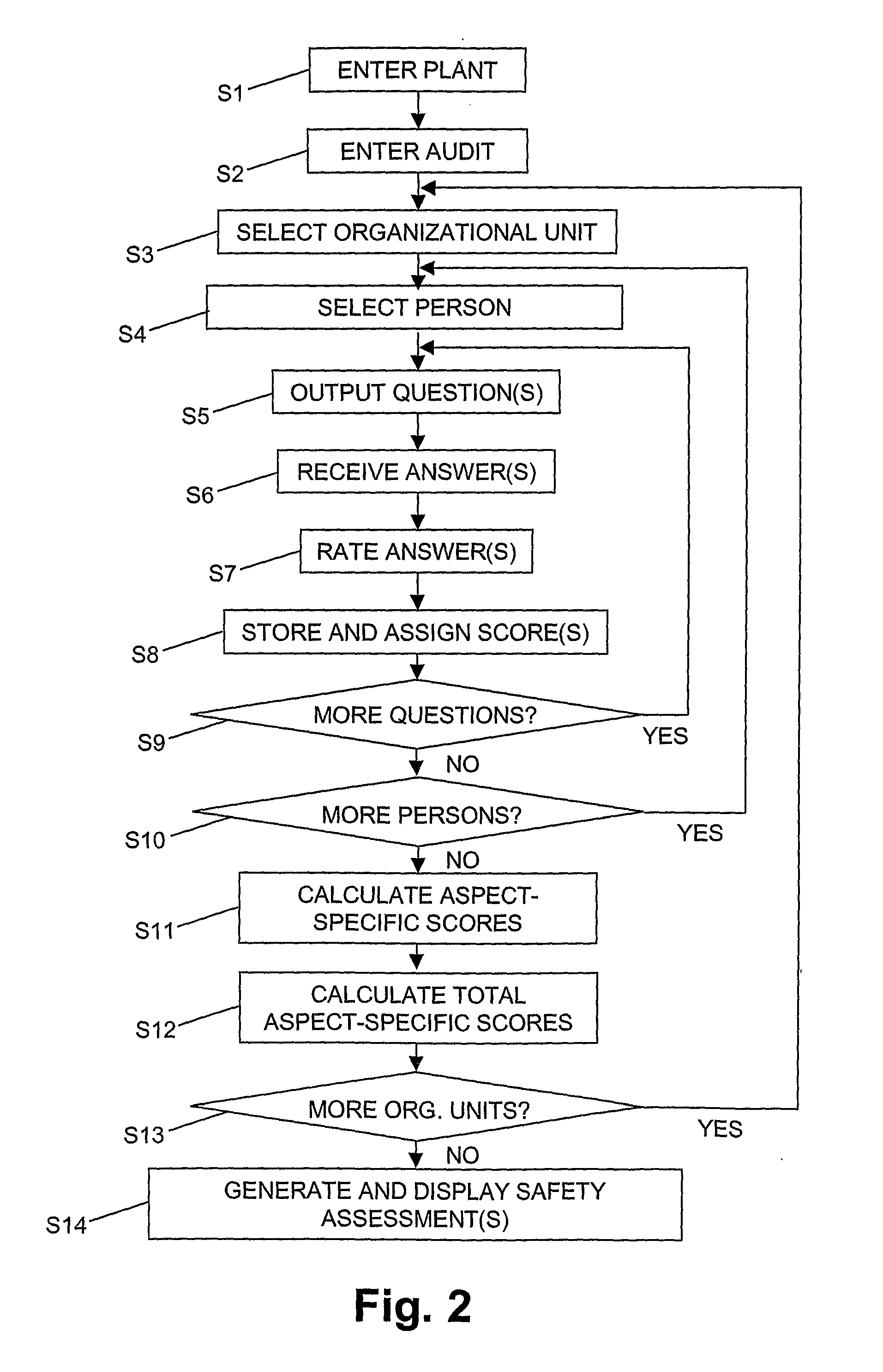[0005]According to the present invention, the above-mentioned objects are particularly achieved in that, for establishing a safety assessment of the process industry plant, stored in a computer are scores, wherein each
score is related to a rating of an inspection, undertaken in one of the plant's organizational units with regards to one of multiple defined aspects of the plant, and / or an answer, given by a human representative of one of the plant's organizational units in response to one of a set of defined questions, each question being related to one of the aspects. The process industry plant includes organizational units such as
top management, operation,
engineering, inspection, maintenance, and / or loss prevention. For example, the organizational units relate to hierarchical levels of the plant. The defined aspects can be seen as different safety relevant aspects of the plant and include, for example, an aspect of organization, an aspect of resources, an aspect of communication, an aspect of training, an aspect of procedures, an aspect of
contingency plan, and / or an aspect of general safety. In the computer, each of the aforementioned scores is assigned to the respective one of the organizational units and to the respective one of the aspects. The questions include, for example, questions related to safety awareness, safety behavior,
change management, and / or
human error. After storing the scores in the computer, calculated in the computer are aspect-specific scores for each one of the organizational units from the scores assigned to the respective one of the organizational units and to the respective one of the aspects. If there is one worst case
score assigned to a particular one of the organizational units for a particular aspect, a worst-case aspect-specific
score is assigned to the particular one of the organizational units with respect to the particular aspect. Finally, the safety assessment is established from the aspect-specific scores of the organizational units. Calculating aspect-specific scores for each one of the organizational units and establishing the safety assessment from these aspect-specific scores make it possible to compare safety levels with regards to specific aspects directly between organizational units having different levels and areas of responsibilities and expertise. Assigning worst case aspect-specific scores to organizational units having at least one worst case score assigned to the particular aspect makes it possible to implement a rating philosophy, in which failure of basic requirements can be weighted such that they are not compensable by positive scores received for other inspections and / or questions related to the respective aspect. Clear and explicit indication of a failure of basic requirements is advantageous because any failure of basic requirements represents a latent failure, which can possibly cause incidents resulting in accidents and / or down time.
[0007]Preferably, different safety assessments are established at different points in time. Aspect-specific scores associated with the different safety assessments are stored in the computer assigned to data about the respective point in time. Generated by the computer is a graphical representation in one common graph of the different safety assessments of a selected one of the organizational units. The graphical representation is generated in one common graph such that differences are visualized between the aspect-specific scores associated with the different safety assessments of the selected one of the organizational units. Establishing multiple safety assessments at different points in time and displaying related aspect-specific scores of an organizational unit for the different points in time in one common graph make it possible to view efficiently and at one glance a department's improvements and / or deteriorations with regards to the different (safety) aspects.
[0010]In a further embodiment, data about inspections and / or answers is stored in the computer. Subsequently, determined in the computer is the rating of the inspection and / or the answer by means of an
expert system from the data about inspections and / or answers. Automated rating of inspections and / or answers increases efficiency as well as consistency of the rating process.
 Login to View More
Login to View More  Login to View More
Login to View More 


